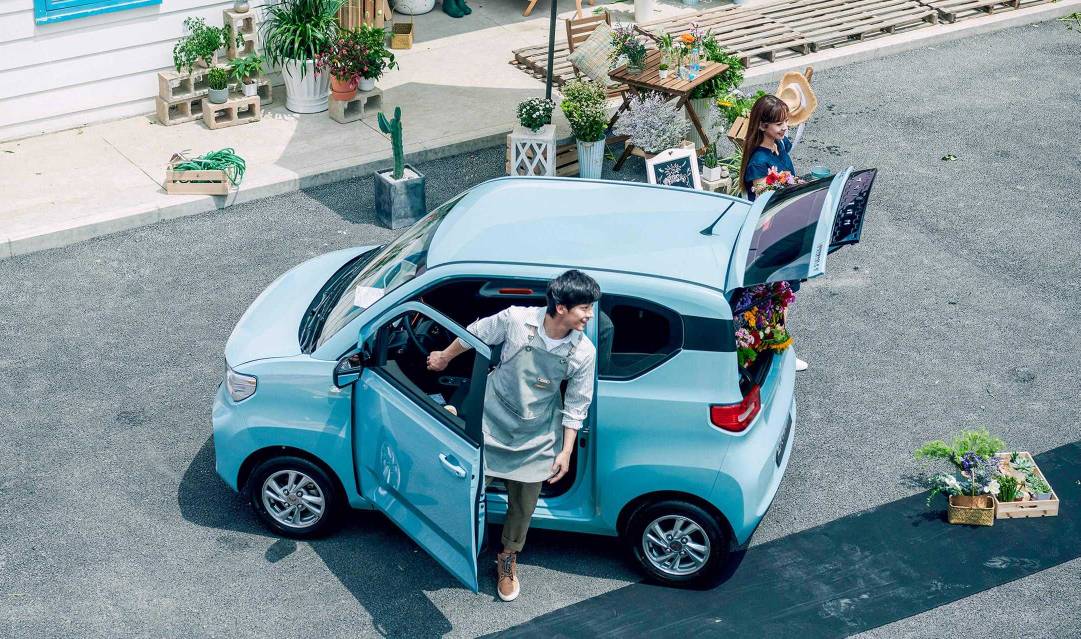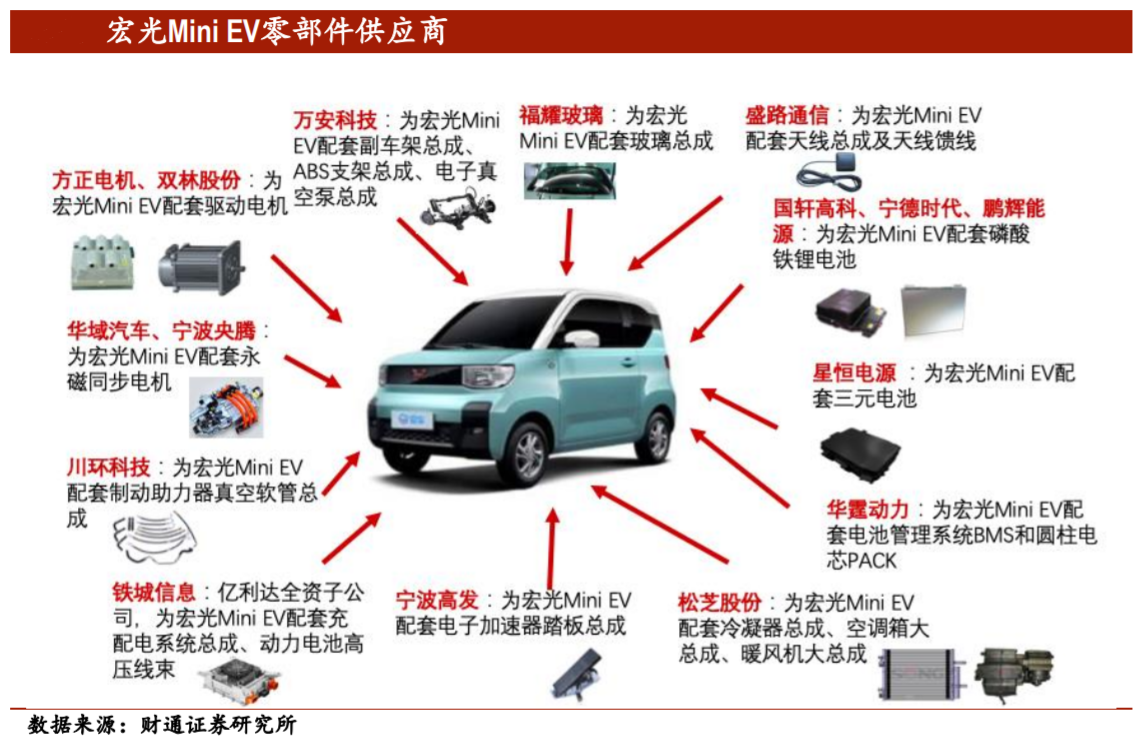Michael Smitka
Prof Emeritus of Economics
Judge, Automotive News PACE Awards (for supplier innovations)
Steering Committee, GERPISA global automotive research network
Here I summarize a few points covered in my SeekingAlpha article published this morning, and provide data in a more readable format – I found it hard to reformat tables on SA for readability. I will also try to provide more data on the new model effect, and a foretaste of a planned SA article on the Wuling Hongguang.
...the success of the Wuling Hongguang is great news for the environment...
First, here is a nicer table on segments. The data come from different sources, which obviously categorize vehicles differently. So it's suggestive. For reference, the Tesla Model 3 is a "B" segment vehicle, and the Model Y is a "B" segment SUV. The Model Y in particular faces a lot of competition, while the Model 3 is getting stale and appears on Chinese automotive websites only with reports of quality issues. Profits will be hard to come by for all players, but that's generally the case in the automotive world, which is cyclical, capital intensive and generates thin margins.
| Class | All Models | EV Models | March 2021 EV Sales | All 2021 Sales | EV Share |
| A00 微型车 | 16 | 14 | 64,189 | 61,333 | 105% |
| A0 | 20 | 4 | 9,515 | 47,273 | 20% |
| A 紧凑型车 | 94 | 21 | 17,021 | 467,553 | 4% |
| B 中型车 | 44 | 4 | 38,251 | 226,260 | 12% |
| C 小大型车 | 16 | 1 | 7,956 | 70,293 | 11% |
| Sedans | 190 | 45 | 126,932 | 872,712 | 15% |
| A0 小型SUV | 64 | 20 | 7,314 | 136,724 | 5% |
| A 紧凑型SUV | 112 | 15 | 15,148 | 476,866 | 3% |
| B 中型SUV | 79 | 15 | 19,018 | 227,550 | 8% |
| C 中大型SUV | 20 | 4 | 7,588 | 31,350 | 24% |
| MPV | 39 | 4 | 1,263 | 75,702 | 2% |
| SUVs | 314 | 58 | 50,331 | 948,192 | 5% |
| Passenger Vehicles | 504 | 103 | 177,263 | 1,820,904 | 17% |
But first, EV sales dominate the minicar segment, the most prominent of which is the GM Wuling Hongguang MINI. My thoughts on why that's the case lie below. Second – ignoring the very small A0 car and the luxury C class sedans and SUVs, the other segment with high sales is the B segment, where the bulk of China's higher-priced models are found. In other words, EVs sell in the minicar segment, and in high-priced segments.
Second, the EV market is quite large, but the small share in several segments suggests lots of room for growth. But why are sales in the A segments of sedans and SUVs so small? It's not for a lack of models. I argue as well that that's for the same reason that the A00 segment sells well.
Here's a neat photo that shows just how small the drive motor can be for a very small car:
The key is costs. Minicars, due to their small size and their target at commutes (with ranges of just over 100 kms) allow them to be built and sold on a commercial basis. However, all other segments try to address a wider market, emphasizing range (or rather range anxiety.) That leads to a viscious circle: range requires a big battery, batteries are heavy so those vehicles also require a more robust frame and suspension, which adds further weight. And both add cost, including beefier drive motors and drivetrain components that can handle higher torque, and more capable power control modules. Quite simply, EVs are more costly than ICEs, and sell only when large subsidies are available.
In practice, that means EVs only sell in cities that impose license plate restrictions in the name of controlling congestion. While 71 Chinese cities have over 1 million registered vehicles, it's only the Shanghai's and Beijing's of China that impose operating restrictions on vehicles that lack local "Class A" license plates. This is similar to London's restrictions on vehicles entering the center city. Now those cities allocate some plates via a lottery, but the chance of winning is very low (0.5% in Hangzhou in February 2021, for example). So in practice car buyers must buy a plate at auction, which can run up to $12,000. That's enough to offset the high prices that EV makers need to charge to cover costs.
Then there are the A00 models. Perusing descriptions of the vehicle on an array of Chinese-language websites suggests that the Hongguang uses 3 batteries: a standard lead-acid one to run lights and infotainment, and an LFP one supplemented by a small NCM battery. Furthermore, GM uses 5 different suppliers for those batteries, they have enough volume to avoid making themselves beholden to a single supplier.
All of this means that A00 EVs are commercially viable without subsidies. They have a vast potential market in the countryside, where dedicated parking / access to an electric outlet are less problematic. They also fit the use case, the top two of which are short-range commuting and taking your kid to school. They're a great 2nd car. Both are points made in surveys cited in the latest "blue book" on the Chinese NEV market, 中国新能源汽车大数据研究报告 (2020).
But will this market generate a "winner," to match the current mindset among investors? No, because there will be a lot of players, and because even if profitable, per-unit profits aren't great on a vehicle costing well under US$10,000.
However, from an environmental perspective this is great news. Large, long-range EVs aren't great for the environment, even if the rise of "green" electricity means that in more and more regions of the world they are probably a modest increment over a gasoline-powered car. Chinese consumers are discovering that a very small vehicle actually meets there needs. We can hope that consumers in the EU and US make a similar discovery, as surveys make it very clear that most round-trips are short in distance and involve at most one passenger. So while it may not be a great boost to GM's bottom line, the Wuling Hongguang is a major step in improving the environmental footprint of vehicular transportation.
Sources:- getting out of car https://n.sinaimg.cn/sinakd2020123s/120/w1081h639/20201203/0fc5-ketnnaq7361120.jpg
- small size of drive motor http://www.020h.com/uploadfile/2020/0801/20200801103440585.jpg
- cutaway of chassis / componentry: http://www.020h.com/uploadfile/2020/0620/20200620032359548.jpg
- supplier list https://n.sinaimg.cn/sinakd2020123s/278/w1141h737/20201203/de0c-ketnnaq7361124.png




No comments:
Post a Comment